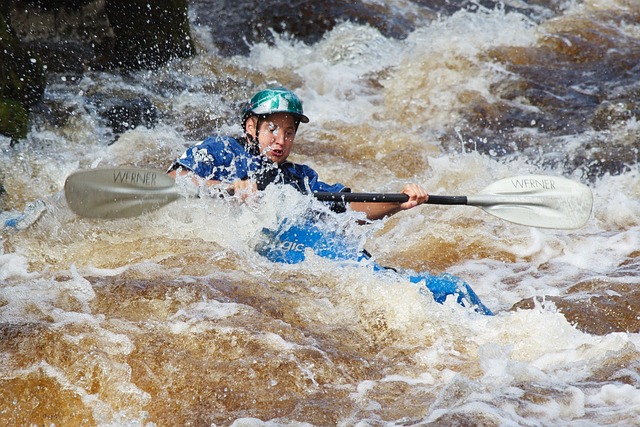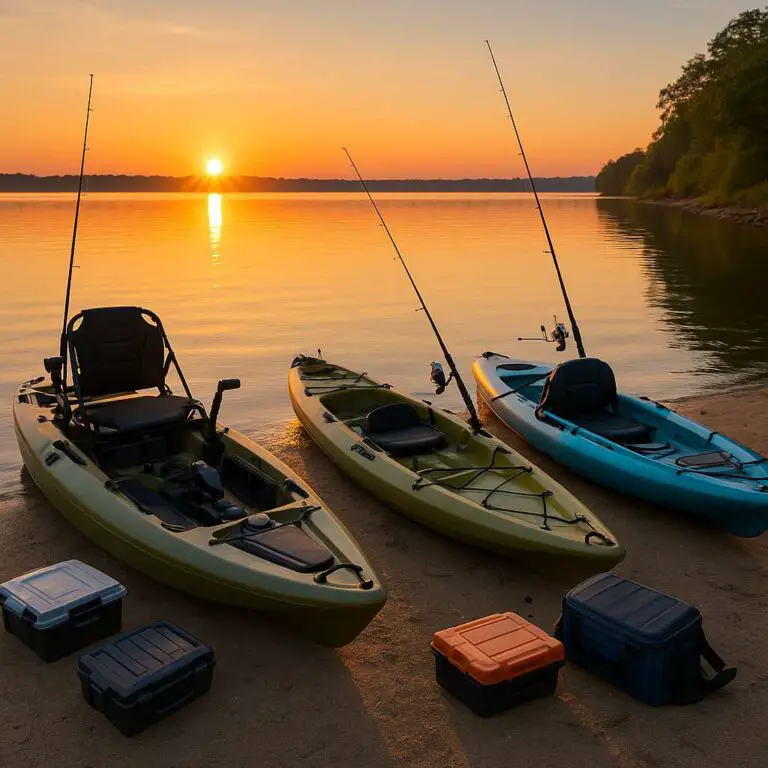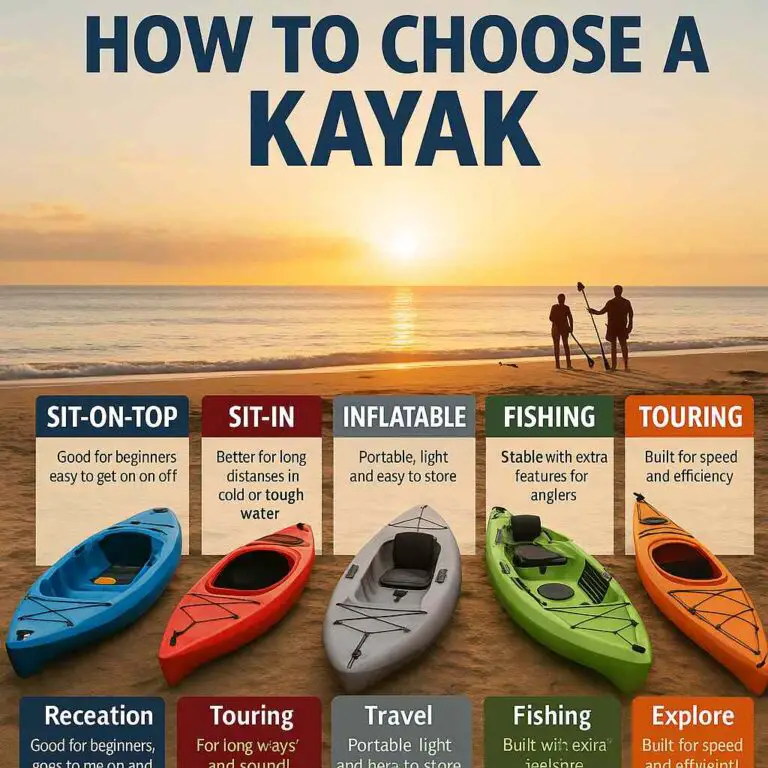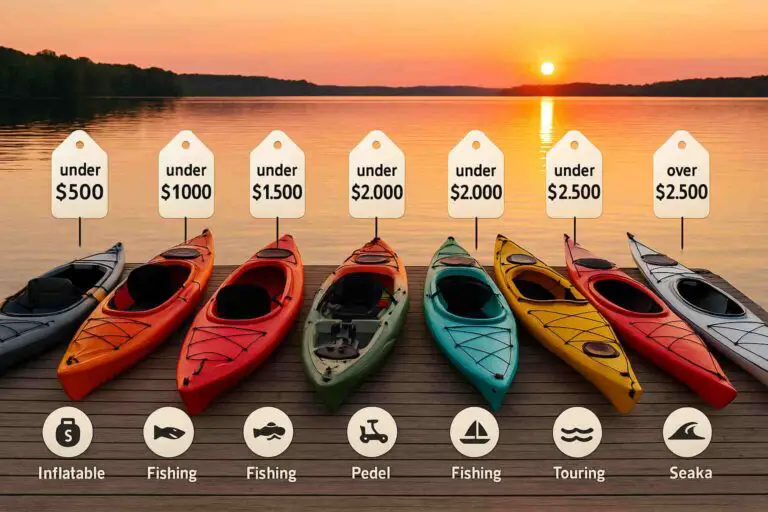Kayaking can be a safe and enjoyable activity when proper precautions are taken, but it’s important to be aware of potential dangers and how to mitigate them. In this article, we’ll explore the risks associated with kayaking and provide valuable tips on staying safe on the water.
Understanding the Risks
One of the primary risks of kayaking is drowning, which can occur if a kayaker capsizes and struggles to exit the kayak or gets swept away by a strong current. To reduce the risk of drowning, always wear a properly fitting personal flotation device (PFD) and consider taking kayaking lessons to learn safe techniques for exiting a capsized kayak.
Hypothermia is another danger, especially when exposed to cold water or air for an extended period. Wearing appropriate clothing and gear, such as a drysuit or wetsuit, can help prevent hypothermia.
Injuries, including cuts and bruises from hitting rocks or obstacles in the water, are also potential risks. More severe injuries can result from collisions with other boats or kayakers. Staying aware of your surroundings and practicing good paddling techniques can help prevent accidents.
In addition to these physical risks, kayakers should be mindful of environmental hazards like strong currents, waves, and weather conditions. Kayaking in areas with high boat traffic or dangerous wildlife, such as alligators or sharks, can also pose risks.
Safety Tips
To ensure a safe kayaking experience:
- Always Wear a PFD: A properly fitted personal flotation device (PFD) is essential. It can save your life in case of a capsize or emergency.
- Dress Appropriately: Choose clothing suitable for the weather and water conditions. Layering is key, and synthetic fabrics that dry quickly are recommended.
- Stay Informed About Weather: Check the weather forecast before your trip, and pay attention to any warnings or advisories.
- Bring Essential Safety Gear: Carry safety equipment like a whistle, paddle float, bilge pump, and a first aid kit.
- Navigation Equipment: If venturing into unfamiliar waters, bring navigation tools like a compass, maps, and a GPS.
- Know Your Limits: Don’t kayak in conditions or waters beyond your skill level or experience.
- Take a Lesson: Enroll in kayaking lessons from a qualified instructor to learn proper techniques and safety practices.
Common Causes of Kayaking Accidents:
The most common causes of kayaking accidents include capsizing or swamping, collisions with other boats or objects, and hypothermia. Inexperience, failure to follow safety guidelines, and adverse weather conditions can also contribute to accidents. Be aware of potential hazards and take appropriate safety precautions.
Emergency Preparedness
In case of an emergency on the water:
- Stay Calm: Assess the situation calmly to determine the best course of action.
- Signal for Help: Use signaling devices like a whistle, flares, or waving to attract attention.
- Call for Help: If available, use communication devices like a radio or cell phone to call for assistance.
- Address Injuries: Provide first aid as needed, but avoid moving seriously injured individuals unnecessarily.
- Stay with the Kayak: If possible, stay with the kayak or other flotation device, as it can offer some protection and aid rescuers in locating you.
- Stay Warm: In cold water, huddle with other kayakers or get out of the water if possible to maintain body warmth.
By being prepared and knowing how to respond to emergencies, you can minimize the risk of injury and increase your chances of survival on the water.
Dangerous Water Bodies or Areas
Certain water bodies or areas are considered more dangerous for kayaking due to factors like water conditions, hazards, and wildlife. Examples include:
- Whitewater rapids: Extremely challenging for inexperienced kayakers.
- Open ocean: Requires advanced skills, specialized equipment, and the ability to handle unpredictable conditions.
- Rivers with strong currents: Can increase the risk of capsizing.
- Lakes with large waves: Risky during windy conditions.
- Areas with wildlife hazards: Such as alligators, sharks, or jellyfish, require extra caution.
Always research and assess the location you plan to kayak, ensuring you have the necessary skills, experience, and equipment to handle potential challenges.
Essential Kayaking Equipment
In addition to a kayak and paddle, here’s a list of essential safety equipment every kayaker should have:
- Personal Flotation Device (PFD): The most crucial piece of safety equipment.
- Whistle: An important signaling device.
- Paddle Float: For re-entering the kayak after a capsize.
- Bilge Pump: Helps remove water from the kayak.
- Spray Skirt: Keeps water out of the kayak cockpit.
- Navigation Equipment: Compass, maps, and GPS for safe navigation.
- First Aid Kit: Essential for treating injuries and medical emergencies.
- Communication Device: A cell phone, VHF radio, or satellite messenger for emergency communication.
Ensure your equipment is in good condition and that you know how to use it effectively in case of an emergency.
Importance of Wearing a PFD
A Personal Flotation Device (PFD) is vital for kayaking because:
- Safety: It is the most crucial safety equipment, reducing the risk of drowning.
- Legal Requirement: In many places, wearing a PFD while kayaking is legally mandatory.
- Unpredictable Conditions: Even experienced kayakers can encounter unexpected conditions; a PFD provides an extra layer of protection.
- Fatigue: Kayaking can be tiring; a PFD helps conserve energy and prevent exhaustion.
- Comfort: Modern PFDs are designed for comfort and minimal interference with paddling.
Always wear a properly fitted PFD while on the water to enhance safety.
Choosing the Right Clothing
Selecting appropriate clothing for kayaking is essential. Here are seven tips:
- Wetsuit or Drysuit: In cold water, wear a wetsuit or drysuit to prevent hypothermia.
- Dress in Layers: Layer your clothing to regulate body temperature.
- Synthetic Fabrics: Choose clothing made from quick-drying synthetic fabrics.
- Water Shoes: Wear water-friendly shoes with good traction.
- Sun Protection: Protect against the sun with a hat and sunscreen.
- Dry Top or Splash Jacket: Use these to stay dry and protect against wind and water spray.
- Avoid Loose Clothing: Loose clothing can get caught on the kayak or paddle; wear snug-fitting attire.
Choosing the right clothing ensures comfort and safety while kayaking.
Other Essential Equipment
Apart from the basics, consider these additional items for a safe kayaking experience:
- Kayak: Choose the right type and size for your intended use.
- Paddle: Ensure it’s the correct length and blade shape for your needs.
- Dry Bag: Keep personal items dry in case of a capsize.
- Headlamp or Flashlight: Essential for night kayaking.
- Tow System: Useful for assisting others or getting to shore in emergencies.
- Spare Paddle: Always carry a spare in case of paddle failure.
- Rescue Gear: Such as throw bags and rescue ropes, to assist others in emergencies.
Before heading out, check that all your equipment is in good working condition.
Pre-trip Equipment Check
Before embarking on a kayaking trip, perform a thorough equipment check:
- Inspect the kayak for damage, including the cockpit rim and hatch covers.
- Check the paddle for cracks or damage.
- Examine the PFD for tears or wear.
- Inspect the spray skirt for any damage.
- Test rescue gear, ensuring it functions correctly.
- Verify the weather forecast and be prepared for changing conditions.
- Bring spare parts for critical equipment.
Regular equipment maintenance and pre-trip checks can prevent accidents and ensure a safe outing.
Learning to Kayak Safely
For beginners, learning how to kayak safely is essential. Here’s how to get started:
- Take a lesson from a qualified instructor to learn proper techniques.
- Begin in calm, shallow water to get comfortable with the kayak and paddle.
- Always wear a PFD and practice basic safety skills.
- Familiarize yourself with navigation tools and awareness of your surroundings.
- Understand your own comfort and skill level; don’t push beyond your limits.
- Consider kayaking with a buddy for added safety.
Key Skills for Beginner Kayakers
As a beginner, focus on mastering these key skills:
- Proper Paddling Technique: Learn how to paddle efficiently, using core muscles and maintaining a smooth stroke.
- Balance and Stability: Practice maintaining balance and stability in the kayak.
- Basic Safety Skills: Familiarize yourself with basic safety skills like self-rescue, entering and exiting the kayak safely, and correctly wearing a life jacket.
- Navigation Skills: Learn how to read maps, use a compass, and navigate in different weather conditions.
- Awareness of Surroundings: Stay alert for obstacles and changing water conditions.
Organizations Offering Kayaking Lessons and Certifications
Several organizations offer kayaking lessons and certifications, including:
- American Canoe Association (ACA): Offers various kayaking courses and certifications for all skill levels.
- British Canoeing: Provides a range of courses and certifications in the UK.
- Paddle Canada: Offers kayaking courses and certifications in Canada.
- National Outdoor Leadership School (NOLS): Provides kayaking courses in the US and internationally.
- Sea Kayak Guides Alliance of BC (SKGABC): Offers certification programs for sea kayaking guides in British Columbia, Canada.
- International Sea Kayak Guides Association (ISKGA): A global organization offering certification programs for sea kayaking guides.
These organizations can help you gain the skills and knowledge needed to kayak safely.
Choosing the Right Kayak
If you’re a beginner looking to purchase a kayak, consider these factors:
- Kayak Type: Choose a kayak type that matches your intended use, whether it’s recreational, touring, whitewater, or fishing.
- Kayak Size: Ensure the kayak is the right size for your height and weight.
- Stability: Opt for a stable kayak that is easy to balance, which is ideal for beginners.
- Cockpit: Select a cockpit size that suits your needs.
- Weight: Consider the weight of the kayak for ease of transportation.
- Price: Stick to a budget that aligns with your financial constraints while still meeting your kayaking needs.
Common Beginner Mistakes
Here are common mistakes beginners make and how to avoid them:
- Poor Paddling Technique: Seek proper instruction to learn efficient paddling techniques.
- Overestimating Abilities: Be realistic about your skill level and choose appropriate conditions.
- Ignoring Safety Precautions: Always prioritize safety by wearing a PFD and following safety guidelines.
- Using Improper Gear: Invest in suitable clothing, footwear, and equipment.
- Incorrect Kayak Size: Select a kayak that suits your size and skill level.
- Lack of Awareness: Pay attention to your surroundings to avoid accidents.
- Driving Under the Influence: Operating a kayak under the influence of drugs or alcohol is illegal in most jurisdictions; never do it.
Conclusion
Kayaking offers an exciting opportunity to explore the water and connect with nature. While it comes with inherent risks, following safety guidelines, wearing the right gear, and continuously improving your skills can make kayaking a safe and enjoyable outdoor activity. By being well-prepared and cautious, you can minimize risks and make the most of your kayaking adventures.








